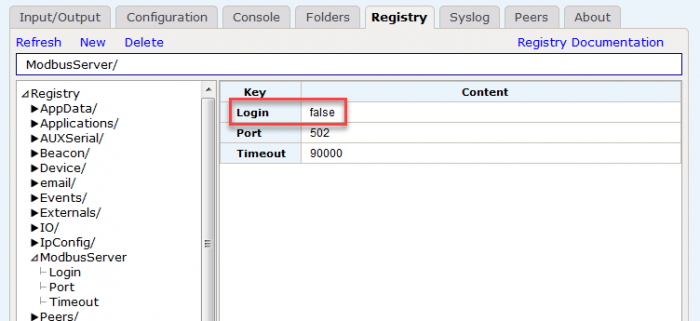MODBUS Server
| Name | Version | Release Date | Size | MD5 |
|---|---|---|---|---|
| Bundled Applications | v24.12.31 | Dec 31 2024 | 519.3 KB | |
| Modbus_Protocol.pdf | v1 | Jul 25 2018 | 123.4 KB | 9faa9832028e4df6bd44ec2f07a109f7 |
The JNIOR has a built-in MODBUS server for MODBUS TCP. The application is loaded by default but not enabled. You must use the DCP to enable the MODBUS server application.
INTEG is working on a MODBUS RTU implementation. This would require the JNIOR 410 to work on a RS-485 network. This application is not yet released but if you contact INTEG you can help us validate it.
The MODBUS server that is built-in implements MODBUS TCP. MODBUS is a request / response protocol and is not as efficient as other protocols. That being said, MODBUS is widely used.
Since the JNIOR is security conscious, we have a login option built-in for applications where a custom function command can be implemented and sent. The Login is set to true by default. If a login cannot be sent, set the ModbusServer/Login registry key to false and reboot the JNIOR.

INTEG can write custom applications to communicate with other MODBUS devices across any of the MODBUS protocols. MODBUS RTU over RS-485 can only be used on the JNIOR 410. The JNIOR 410 is the only model with RS-485 capabilities.
The MODBUS Server application is part of the Bundled Update Project. Here is the documentation for the MODBUS server and MODBUS TCP protocol implemented by the JNIOR..